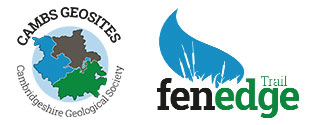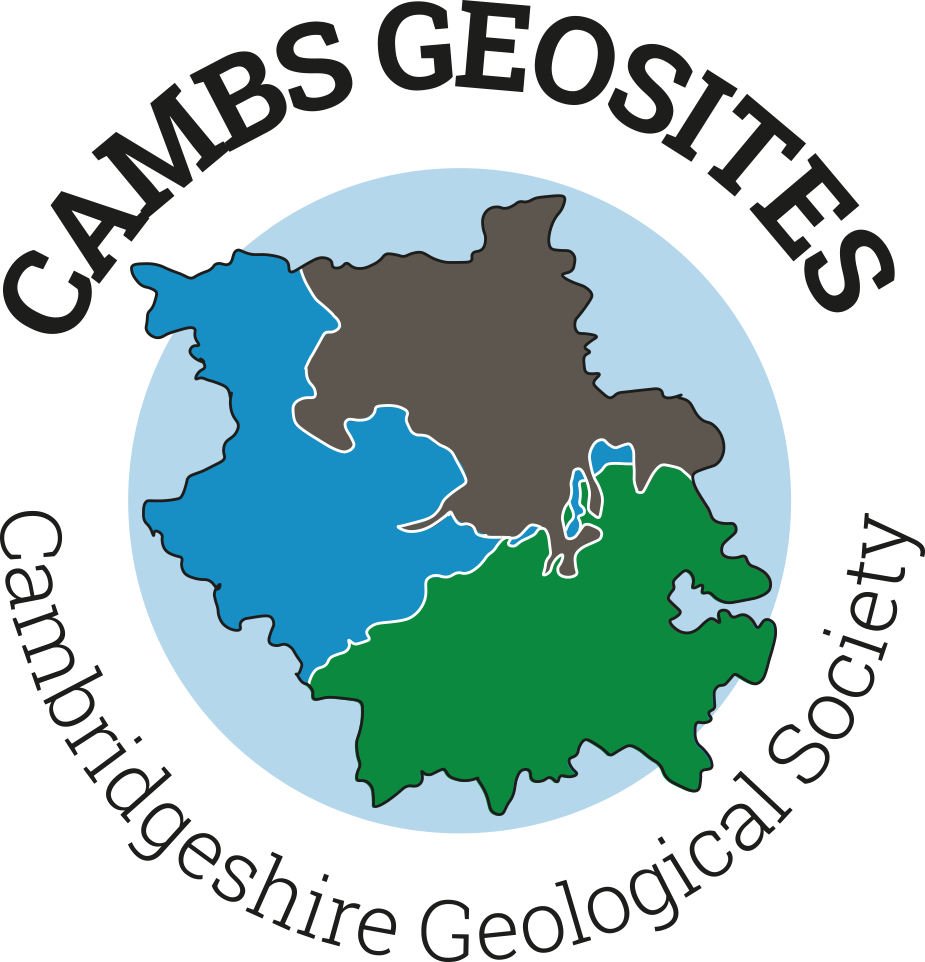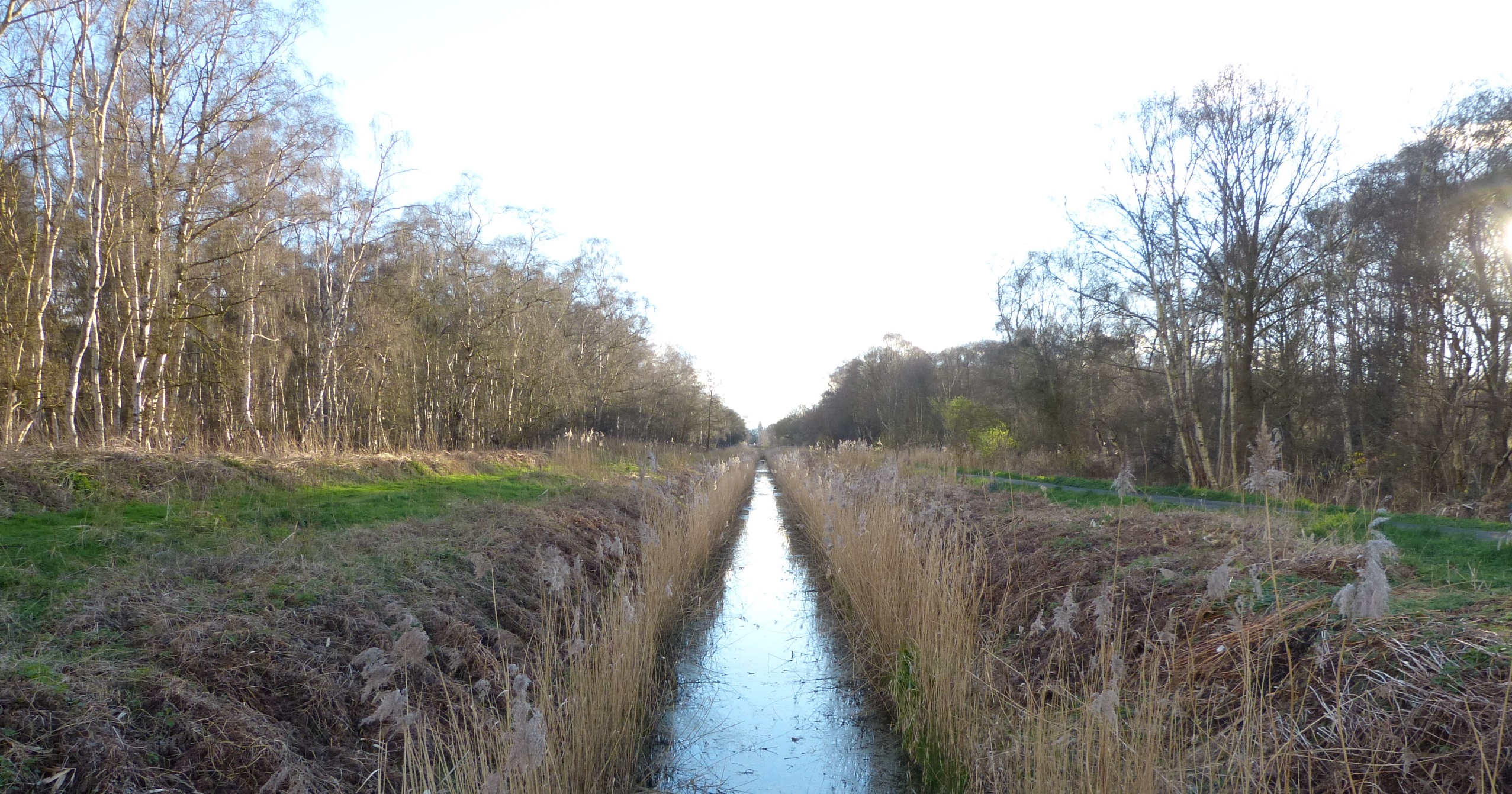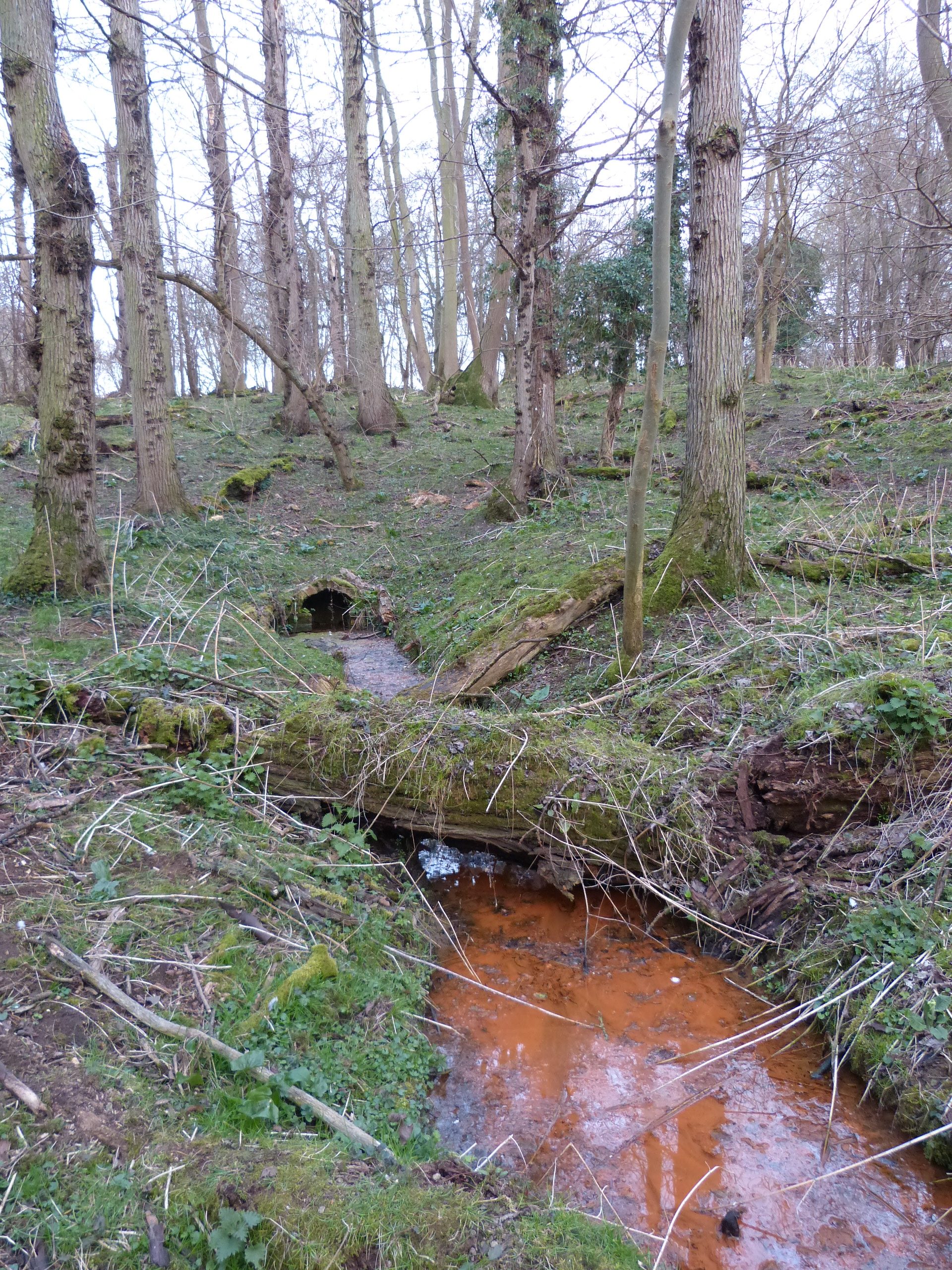

Cambridgeshire’s Geodiversity Landscapes
The CGS Geosites team has developed a landscape approach to describing the geodiversity of Cambridgeshire and identifying the geological (and geomorphological) features to be found in the county. This sets the geology in a setting familiar to most people and provides a way to learn about and understand the local geology. It also highlights the geodiversity features that should be conserved as they tell the story of earth’s history and its effects on historic and cultural landscape. Very importantly, it provides the context in which local ecology can be understood and biodiversity conservation focused. It also highlights the key role that geology has played in the economic development of the county, through the extraction of limestone, chalk, clay, gravel, sand and peat, and the consequent use of material for local buildings.
The aim is to provide a comprehensive description of local Earth Heritage and to promote its geoconservation.
We have divided the county into several landscapes as a practical way of describing the links between geology, topography, ecology and history. Each landscape tells the story of how geodiversity has given the area its fundamental character and set the scene for any historical development. The landscape boundaries are broadly drawn and areas on the boundaries of two landscapes will be influenced by characteristics from both. This is a developing project and still in its early stages but it has already shown that there is significant geodiversity in the county and that, despite the many man-made changes that the county has undergone, the geology not only remains the primary influence on the topography but also has a direct relationship with the present day ecology and also the character of local settlements.
The details provided for each landscape will hopefully inform those developing landscape assessments for Planning purposes at various levels, and also provide landowners with accurate geological information to help with their nature conservation efforts.
Getting to know the landscapes
We will be describing walks and places to visit that introduce you to the landscapes and their character.
Due to the rich but often overlooked history on the Fen Edge, we have developed the Fen Edge Trail, with published Walk Guides that describe, not only the route for each walk, but the underlying geology, topographical features and points of cultural interest. We try to work in partnership with local communities to enable geology and landscape to be included in their own heritage projects.

Landscapes with Geology map
for Geology key see below

Geology map

Geology, hillshade and rivers map

Fen Basin and Fen Edge
Cambridgeshire is known for its fenland landscape, a unique area of extensive low-lying land that has been formed by a complex, dynamic and rich geological history. Clues to this history, can be found by studying the surprisingly diverse deposits that remain, including sands and gravels from the last half a million years (the later part of the Pleistocene ‘Ice Age’), as well as freshwater peat, tidal flat sediments and river alluvium deposited in the last eight thousand years or so (the Holocene) since the last glaciation. It is these Quaternary deposits that give such a distinctive character to much of the north of the county, lying in the extensive Fen Basin and below sea level in some places. The transition from the low lying fens to the surrounding ‘highland’ forms a significantly important historic area, the Fen Edge, with characteristic landscape features of its own. All three of the main rivers have extensive ‘washlands’ on the fen edge that are of high value to nature conservation.
Fen Islands and Ridges
Within and on the edge of the fenland are a number of islands and ridges, each with a different geological character, and some with a very rich cultural history due to their isolated location in what was the largest area of wetland in the country. There are five main islands – Whittlesey, March, Chatteris,Stonea and the Isle of Ely, and two ridges – Yaxley Ridge and Upware Ridge. The first four islands are partly formed by the March Gravels, probably deposited during a cold stage of the Pleistocene but with reworked material from a warmer phase and elements of coastal deposition. The Isle of Ely is formed mostly from clay and sandstone ridges and includes North Hill, the highest spot in the Cambridgeshire Fens. All but Whittlesey have glacial till or other glacial material that gives them extra height. The Yaxley Ridge is mostly formed from glacial material whilst the Upware Ridge has a unique outcrop of Corallian (Upper Jurassic) limestone – you can still see the corals!
Uplands
In the west of the county, there are four areas of ‘uplands’, less famous than the hills in the south of Cambridgeshire. Three of these western uplands, the Grafham Plateau, Alconbury Weald and the Western Plateau, are mostly underlain by Jurassic clays and covered with extensive areas of glacial deposits, also with a high content of clay. However, the northernmost upland, the Jurassic Limestone Ridge (including the Sibson Ridge), is very different, consisting mainly of limestone interspersed with clays and sandstones. The ridge lies between the Welland and Nene Valleys, with an additional area lying to the south of the latter. Limestone quarries at Barnack are the source of one of the most famous building stones in the east of England, used to build the cathedrals at Ely and Peterborough. These Jurassic formations are part of the limestone sequence that extends south as the Cotswolds and north into Yorkshire.
The ‘Ice Age’ glacial deposits (mostly ’tills’) date from the last half a million years and consist of a mixture of clays, sands, silts, chalk, gravel, pebbles, cobbles and a few larger ‘erratics’. The Western Plateau, between the Cam and Ouse valleys to the west of Cambridge, is famous for its ‘boulder clay’ woodlands.
Towards the south east, the bedrock become younger, with the lowest Cretaceous rock formation (overlying the youngest Jurassic) being the Woburn Sands. This sandstone, a continuation of the Greensand Ridge that runs through Bedfordshire. outcrops in several areas from around Gamlingay to Ely, giving the county a small area of sandy heath in the south west on the Western Plateau.
The Chalk escarpment that forms the southern part of the county dates from the Cretaceous and provides Cambridgeshire with a share of England’s chalk downland, extending as the Chilterns to the south west and as the Yorkshire Wolds in the north of the country. The escarpment forms two landscapes, the Heydon Chalk Uplands and the Balsham Chalk Uplands.
Aprons
Less well known to most people, and in some ways less distinctive, are the (mostly clay) Aprons that lie adjacent to the uplands. Skirting the areas of higher land are the Woolley Apron, the Woodwalton Apron, the Swavesey Apron, the Whaddon Apron and the Lode Apron.
Younger than the Jurassic rocks, and therefore mostly lying to their south east, is the Cretaceous Gault clay and the lowest, very clayey, layer of the Chalk, the West Melbury Marly Chalk. These two rock formations underlie the Lode Apron and Whaddon Apron, and the southern part of the Swavesey Apron.
River Valleys
The Cam Valley, lying to the north of the escarpment, contains the main course of the Cam as well as its tributary, the River Granta. Both receive much of their water from chalk springs that line the scarp slope as does the Cam’s other main tributary, the River Rhee, which flows through the Whaddon Apron, and the streams that flow down into the Lode Apron. The Kennett Valley, in the east, is also fed by chalk springs that flow into the Rivers Snail and Kennett. An old course of the River Cam flowed north west to join the Ouse and has left a large area of gravels, the North Cambridge Terraces, over the bedrock.
The Great Ouse Valley winds its way from the Bedfordshire border, through the highlands in the west, with the river having left extensive deposits of gravel and alluvium before flowing into the fenland. An incredibly rich archaeological landscape has been revealed where the river valley meets the low-lying fenland.
The Nene Valley dissects the higher land in the north west of the county, carrying the river east to empty into the fenland. As with the Ouse Valley, this junction between highland and lowland has a rich cultural heritage, shown by the discoveries at the famous site of Must Farm. In the far north is the Welland Valley, underlain by Oxford Clay.
Local Geological Sites (LGS) in Cambridgeshire
We are researching each landscape to identify Local Geological Sites that represent the local geodiversity and associated economic and cultural geology. Previously called RIGS (Regionally Important Geological Sites) and also referred to as Geosites, Although Local Geological Site is not a statutory designation (governed by law), geoconservation of an LGS needs to be considered within the planning system. Our Geosites initiative was launched at the beginning of 2010 with one of its main aims being to obtain LGS designation for sites in the county that are of geological interest for their scientific, educational, historical or aesthetic value. We are working in each of the landscape regions to designate important sites as LGS. Many of these sites are likely to have public access and can be used by community groups and the general public to enjoy discovering their local landscape.
Current LGS are shown as black dots (note towns are also shown as black dots) on the above geology landscape maps. SSSI are shown as red dots.

The Mapping of Landscapes, Geology and Soils of Bedfordshire and Cambridgeshire
By Timothy Farewell, Peter Friend, Martin Whiteley and Joanna Zawadzka
Some important groundwork was done in 2011 by Timothy Farewell and others when they broadly mapped the landscapes, geology and soils of Bedfordshire and Cambridgeshire.
National Character Areas
Natural England has described the broader National Character Areas of the county (and the rest of England). Within each area there are a variety of landscapes, each with a different ecological character, for which more detailed descriptions are needed in order to guide nature conservation.




















